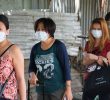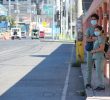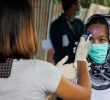DAVAO CITY, Philippines – The Department of Health’s (DOH) recent report that included a “mass recovery” of 38,075 persons from coronavirus (Covdi-19) raised questions on the basis of this data.
This item came up on their report on July 30 where the DOH implemented a “mass recovery” adjustment where mild and asymptomatic cases are retagged as recovered following endorsement from regional offices.
The “mass recovery” adjustment resulted in 5,000 additional recoveries on July 15. The report of 38,075 recoveries on July 30 brings the total recoveries to 65,064.
The DOH explained that this rise in the figure is part of their “massive data reconciliation efforts through the COVIDKaya platform resulted in faster and more accurate tagging of health statuses on deaths and recoveries.”
But the health group Coalition for People’s Right to Health (CPRH) in their statement further explained why the DOH made this adjustment but why it still does not paint the whole health situation.
One valid reason is the adjustment made by DOH based on updates of the World Health Organization (WHO) on the classification of cases.
The WHO has classified a patient as recovered without the patient prescribing the 10 to 14 days of isolation and had no visible symptoms manifest. This is based on practices in the United States and Singapore.
Another factor is the RT-PCR is no longer the basis of detecting a recovery.
“There is a possibility that (a patient) may still test positive six weeks after infection,” says Dr. Josh San Pedro, co-convener of CPRH, “this is because the test may detect the dead RNA strains of the virus even if the patient has recovered and will no longer transmit the virus.”
“Even the anti-body test may generate a positive IgG,” he added.
But the problem, the group says, is the delay in working the data, as the update from WHO was released in May.
The group also points out other problems in the country’s health response to the pandemic.
“It is an effort to distract the public of the real situation with the decrease of active cases amidst the increasing cases of Covid-19 in the country,” San Pedro said.
As of July 31, a total of 4,063 confirmed cases was reported by the DOH, and CPRH noted that there are 2,000 to 4,000 cases of the infection being reported every day.
“Covid-19 cases have increased not only in NCR but also in Cagayan Valley, Southern Tagalog, MIMAROPA, Bikol, Eastern Visayas, and nearly all parts of Mindanao because of the lack of testing for the returning (locally stranded individuals), OFWs (overseas Filipino workers) and their contacts,” the group said.
CPRH also noted that hospitals are already in its full capacity in treating patients, and quarantine facilities and testing lacking, and frontliners either exhausted or getting infected.
Testing still falls short on asymptomatic patients and close contacts.
Dr. San Pedro noted that the Philippines is the only country in the Western Pacific to remain the category of high community transmission.
Dr. San Pedro said solutions should be made and not just simply wait for a vaccine. “It’s not just a vaccine or lowering the curve that is the solution, it’s also raising the quality and state of health as part of people’s right.” (davaotoday.com)










